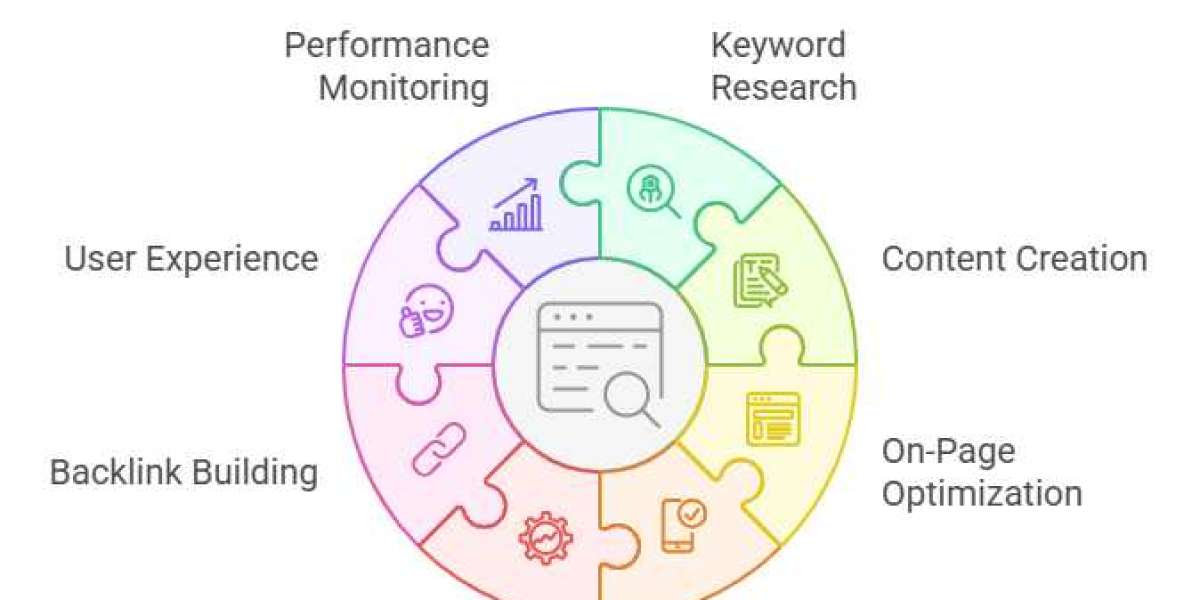Search Engine Optimization (SEO) is a crucial component of any successful digital marketing strategy. With the ever-evolving algorithms of search engines like Google, staying updated on the best practices is essential to ensure your content ranks high and reaches your target audience effectively.
Understanding the Basics of SEO
SEO involves optimizing your website and content to improve visibility on search engine results pages (SERPs). This includes on-page SEO (content and HTML source code optimization), off-page SEO (backlinks and social signals), and technical SEO (site structure and performance).
Key SEO Best Practices
1. Keyword Research and Optimization
Keywords are the foundation of SEO. Identifying the right keywords helps you understand what your audience is searching for.
Use Tools: Leverage tools like Google Keyword Planner to find relevant keywords.
Strategic Placement: Incorporate keywords naturally in titles, headings, meta descriptions, and throughout the content.
Long-Tail Keywords: Focus on long-tail keywords for more specific search queries, which often have less competition.
2. High-Quality Content Creation
Content is king in the world of SEO. Google prioritizes content that is informative, engaging, and valuable to users.
Originality: Ensure your content is unique and provides fresh insights.
Comprehensive Coverage: Address topics thoroughly to meet the user's search intent.
Regular Updates: Keep your content updated to maintain relevance and accuracy.
3. On-Page SEO Optimization
On-page SEO helps search engines understand your content better.
Title Tags and Meta Descriptions: Craft compelling and concise titles and descriptions with target keywords.
Header Tags (H1, H2, H3): Organize content with clear headings for better readability and SEO.
Image Optimization: Use descriptive file names and alt text for images to improve accessibility and SEO.
4. Mobile-Friendly Design
With the majority of users accessing the internet via mobile devices, Google has adopted mobile-first indexing.
Responsive Design: Ensure your website adjusts seamlessly to different screen sizes.
Fast Loading Speed: Optimize images and use efficient coding practices to enhance site speed.
5. Technical SEO
Technical SEO ensures that your website meets the technical requirements of search engines.
XML Sitemap: Create and submit an XML sitemap to Google to help index your pages efficiently.
Robots.txt File: Use this file to control which pages search engines can crawl.
Secure Website (HTTPS): Security is a ranking factor; ensure your site is HTTPS secure.
6. Backlink Building
Backlinks from reputable sites signal authority to search engines.
Quality Over Quantity: Focus on earning high-quality backlinks from authoritative websites.
Guest Posting: Write articles for reputable blogs in your niche to gain backlinks.
Broken Link Building: Identify broken links on other sites and suggest your content as a replacement.
7. User Experience (UX) and Engagement
Google values websites that offer a positive user experience.
Easy Navigation: Design intuitive menus and clear navigation paths.
Engaging Layout: Use visuals, bullet points, and short paragraphs to enhance readability.
Low Bounce Rate: Keep visitors engaged with relevant content and interactive elements.
8. Regular Performance Monitoring
Tracking your SEO performance helps identify what’s working and what needs improvement.
Google Analytics: Monitor traffic, user behavior, and conversion rates.
Google Search Console: Track indexing status, search queries, and site performance.
SEO Audit Tools: Regularly audit your site to identify and fix technical issues.
Conclusion
SEO is an ongoing process that requires continuous learning and adaptation. By implementing these best practices, you can improve your website's visibility, drive more organic traffic, and stay competitive in the digital landscape. Remember, SEO isn’t just about pleasing Google; it’s about providing value to your audience, which ultimately leads to sustainable growth.



